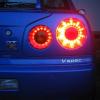PowerFC: Ran out of Load Points.
Announcements
-
Similar Content
-
Latest Posts
-
Yeah, you need to do it properly. You need to start out slow and gentle, ramping it up until they are good and hot, but not cooking, then roll off the other side (instead of letting them cool down quick).
-
By joshuaho96 · Posted
I think yeah less hot fuel dumping into the top of the tank that wants to evaporate easily, fewer connections/hoses for permeation. Something like that. Also lower cost/easier production. Even my 2000 LS400/Celsior is a deadhead system. A single fuel hose to the fuel rails which have pulsation dampers attached and no return line. -
I might do a few more high temp bed ins as described here. I have a nice quiet 80kph road right near me. How To Bed-In Your EBC Brakes For Street Or Track Use - EBC Brakes https://share.google/AjnOTILXoiqQnLu8p
-
I did a few 80-0 stomps. I then just rode the brakes while I applied throttle for a while to get them nice and hot. I live on a big hill and have been down it a few times also with stomps and brake riding.
-
Biggest thing is you're okay! It sounds like between the accident, and the drive home, it was a pretty torturous trip again! On the bright side, you took the opportunity to enjoy the event more from the perspective of a spectator, than as an entrant! Sad to see so much damage to the car. It really has taken a HUGE hit in the front end. If/when you choose to repair, hopefully the rails are straight (At least from shock tower backwards). Hopefully the extra cage coming through there has save most of the chassis rails, and HOPEFULLY saved the motor too. Best of luck when you eventually get motivated to start pulling it down to check it all out
-






Recommended Posts
Create an account or sign in to comment
You need to be a member in order to leave a comment
Create an account
Sign up for a new account in our community. It's easy!
Register a new accountSign in
Already have an account? Sign in here.
Sign In Now